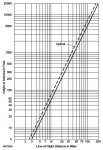Photobug
Well-known member
I recently had a need for a long range communication. I was sailing across a lake on a tiny boat without any power or built in radio, phone reception was spotty. My wife and I managed to get enough phone reception to direct me to the campsite she had driven up to. I have a handheld VHF with 5 watts, but expect only 3-5 miles of range with it. What are my options for small handhelds with better range? I am also considering something like an In-reach but that would not help if the other receiver does not have cell coverage.



